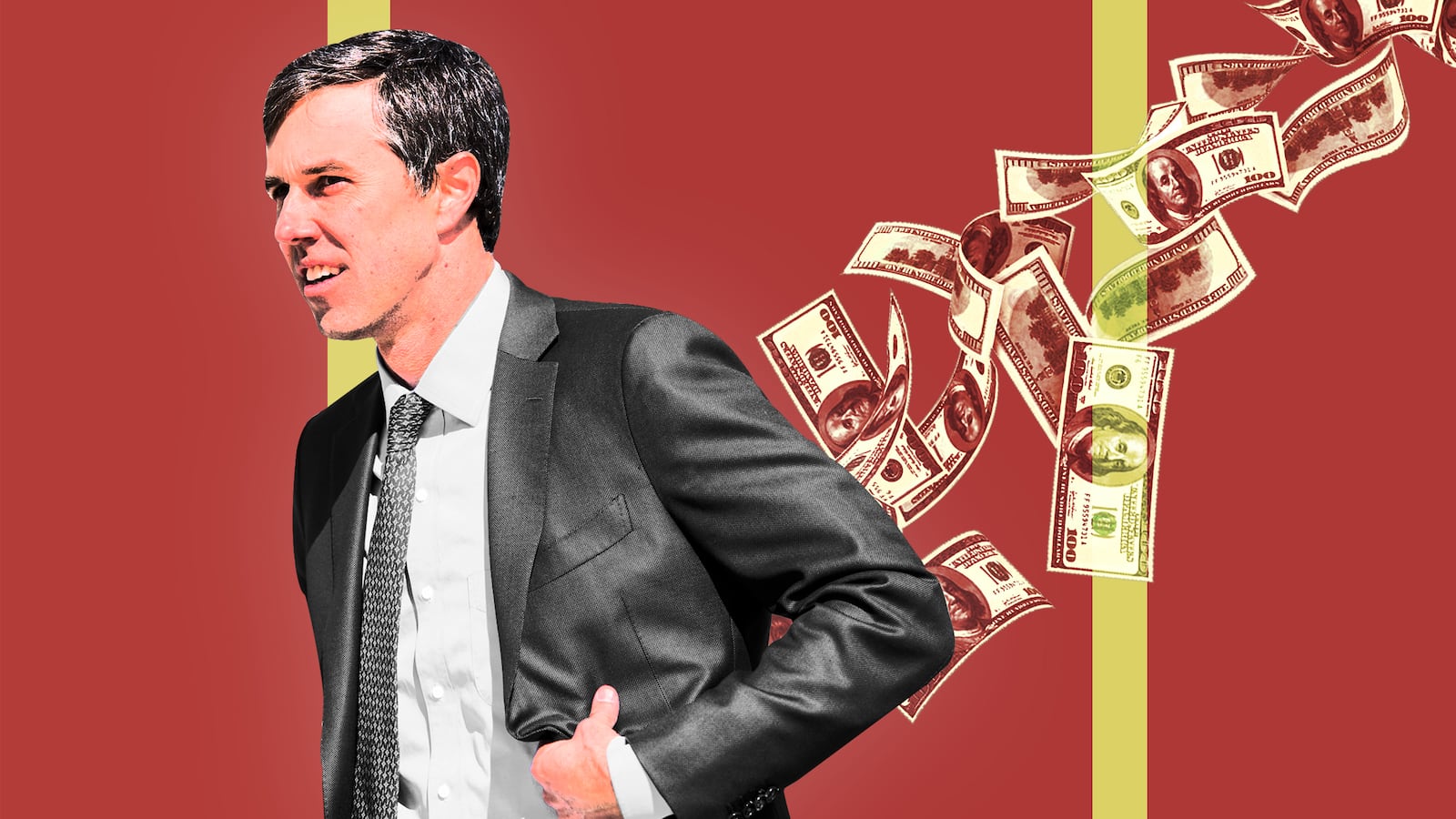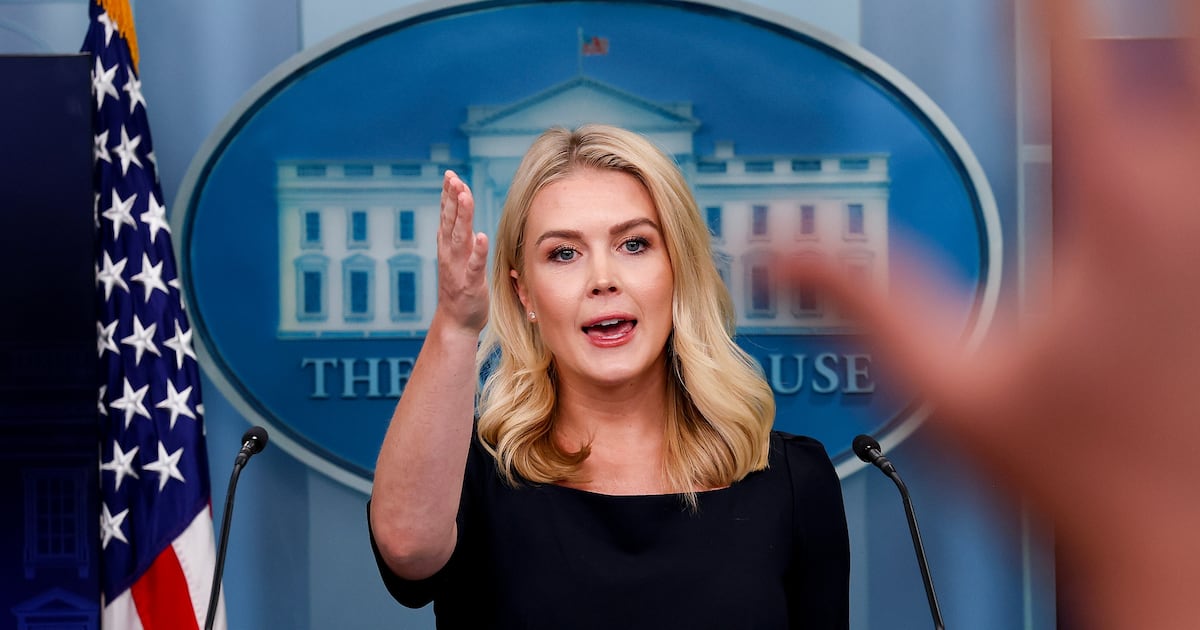Rep. Beto O’Rourke (D-TX) knew, at the outset, that his campaign to unseat Sen. Ted Cruz (R-TX) would be a long shot. Texas had not voted for a Democratic senator in 25 years, O’Rourke didn’t have statewide name recognition, and, moreover, he was pledging to run without taking money from political action committees—a potentially healthy spigot of campaign funds that he would be foregoing.
To overcome those odds, the Texas Democrat and his top aides placed a major bet on a novel strategy: they would dramatically break down the barriers between candidate and voter. O’Rourke would make heavy use of social media to essentially broadcast otherwise mundane daily functions. And he would treat the often-pesky task of campaign fundraising as an ongoing conversation rather than a plea for cash.
“Hola, from Southwest Flight 274, Austin to D.C., seat 15C. What a weekend,” read one illustrative February 26 email from O’Rourke to his subscribers, an email that also included over a dozen pictures of the Democratic candidate for Senate, mostly framed in crowd shots on his travels across the Lone Star state.
So far, at least, O’Rourke’s bet has paid off, and it’s paid off big. The campaign announced this past Monday that it had raised an excess of $6.7 million in the first fundraising quarter of 2018 with more than 141,000 contributions. That number nearly matches the massive haul Sen. Elizabeth Warren (D-MA) had in the first quarter of her 2012 campaign. In three of the four reporting periods so far, O’Rourke has outraised Cruz. And operatives and advisers are now confidently predicting that O’Rourke will raise the most online of any candidate in Senate history, building a formidable list of supporters along the way akin to that of Sen. Bernie Sanders (I-VT).
“This is the hallmark of a Bernie-style fundraising message—that it's not only about the candidate, and it's not some consultants trying to scam a bunch of old people for $3. It's about inspiring people to do something most might call impossible,” a Democratic digital fundraiser, requesting to speak candidly on background, told The Daily Beast.
No longer considered such a longshot, O’Rourke owes his fundraising success to more than just his informal, conversational approach. Cruz’s bete noire status among liberals has certainly played a role as well, not to mention the broader climate that is favoring progressive-minded candidates, even in Texas.
But the O’Rourke fundraising operation is still proving to be a remarkable success, one that some of the top digital operatives in the Democratic Party believe could be foundational for future campaigns.
At the heart of the operation is a basic idea: that flooding the zone is fundamentally a good thing. Voters can see O’Rourke all the time, in emails, videos and tweets that the campaign posts every day. He broadcasts from settings that politicians normally shun or find so incredibly mundane that they don’t think there is any particular advantage in advertising. He did a Facebook Live post while in line for Whataburger, and during his wait to get a haircut, and while he got gas, and as his son climbed a tree, and as he picked up donuts, and while he drove across the country with Rep. Will Hurd (R-TX). He’s live streamed his jogs, only to be joined by other joggers who have live streamed his live stream.
“People wake up early to run with him through the streets of Texas like he is Rocky fucking Balboa,” said one awestruck Democratic operative.
Those close to O’Rourke insist that he is making the decisions about when and where to post—something he’s done since his first run for Congress in El Paso in 2012—and that he genuinely wants to be seen as much as possible since he can’t knock on every door in Texas. The goal is to give voters the sensation that they’re actually playing a role in his David and Goliath campaign. And while the cumulative effect has been a smashing success, even close associates concede that they’re still not sure which particular post will work best.
“Did we pick up a lot of donors because they saw him getting a haircut on livestream? I have no idea,” a source directly familiar with the campaign told The Daily Beast.
Campaigns have tried this approach before. But the candidate who operatives view as the first to innovate in this fashion failed miserably at doing so.
During the 2008 presidential election, Sen. Chris Dodd’s (D-CT) digital team spearheaded the use of stripped-down, informal emails, it posted real time updates of donor drives, and ran debate-clocks to monitor how much time (or, in Dodd’s case, how little) each candidate was allowed to speak. Through the service Ustream (a precursor to Periscope and Facebook live) it ran live feeds of the campaign office, of staff interacting with supporters, and of the candidate on the road. Occasionally, it would run all three at once. Dodd dropped out after moving his family to Iowa and still finished with less than one percent of the vote.
Others have used similar tactics to better effect. Sen Rand Paul (R-KY) drew attention for broadcasting a whole day on the trail in 2015, an event made even more notable when he called it a “dumbass livestream” while broadcasting.
O’Rourke is using “the same tools as a presidential operation,” a Democrat directly familiar with the candidate’s operation told The Daily Beast. In fact, the O’Rourke campaign is employing two firms best known for their work on presidential campaigns: Blue State Digital technology, which worked on Barack Obama’s 2008 and 2012 runs and Revolution Messaging, which was on Sanders’ 2016 effort.
At Revolution, there is one person in particular who operatives say is playing a major role in O’Rourke’s fundraising bonanza. Shelby Cole, a senior digital strategist who is from Texas and has worked a number of smaller campaigns there previously, is point person on the O’Rourke account. Before joining the firm, she ran the email program for Wisconsin Democratic Senate candidate Russ Feingold. Feingold lost his bid for his old seat in 2016, but Cole helped him raise $7.4 million online.
Revolution did not make her available for an interview and instead referred The Daily Beast to O’Rourke’s campaign. But other operatives who have worked with Cole praised her ability to help sell a candidate to voters without relying on desperate fundraising appeals like some of those much-maligned emails from the Democratic Congressional Campaign Committee.
“You can’t look at your supporters as an ATM,” said Josh Orton, former senior adviser to Feingold, told The Daily Beast. “People want to open the emails because they know that they’re being treated like members of a community, members of a movement.”
With Cole at the helm, O’Rourke’s team has put this concept into practice better than anyone else currently running. The campaign’s objective has been to build a so-called “ladder of engagement.” If one were to go to O’Rourke’s website at the start of the campaign and sign up out of interest, what might come next would be an ask for that person to sign a petition. After that could come a fundraising appeal. And once there was a committed list of people, the campaign could then ask them to knock on doors or make phone calls on the candidate’s behalf.
This allows voters to feel as if they’re being talked to, as opposed to targeted. And O’Rourke supplements that by breaking down walls that exist between himself and the voter, with little flourishes like signing the emails he writes, sending some from his wife Amy, and relaying small vignettes from the trail. One such vignette came in the form of an email from February 2018, when O’Rourke’s campaign told a story about the candidate meeting a man in Archer City, Texas, who had explained to the congressman that the last Senate candidate who came to his city was Lyndon Johnson in 1948.
“Keep me on the road,” the email reads. “Keep me doing this the right way, meeting the people that I want to represent and serve.”
O’Rourke and his campaign are still tinkering with his approach, cognizant that donations are coming from all types of people and sources. Some donate via the emails and some when they see a comment on one of the Facebook Live streams. As successful as he has been to date, there is room to grow.
The vast majority of O’Rourke’s contributors have likely not maxed out, meaning that, as his conversation with them continues, they will likely be giving again.
“If I’m Ted Cruz, I look at that and go ‘oh shit, O'Rourke can go back to these donors over and over again,’” Orton said.
With reporting by Sam Stein






